| Fare zone | Cash | Oyster & Contactless cards | Travelcard (Train, Bus & Tram) | ||||||||
|---|---|---|---|---|---|---|---|---|---|---|---|
| Single fare | Single fare | Daily cap | Weekly cap | One day travelcard | Week travelcard | Month travelcard | Year travelcard | ||||
| Peak | Off-peak | Peak | Off-peak | Anytime | Off-peak | ||||||
| Zone 1 fare | £6.70 | £2.80 | £2.70 | £8.50 | £8.50 | £42.70 | n/a | n/a | n/a | n/a | n/a |
| Zone 1-2 fare | £6.70 | £3.40 | £2.80 | £8.50 | £8.50 | £42.70 | n/a | n/a | £42.70 | £164 | £1708 |
| Zone 1-3 fare | £6.70 | £3.70 | £3 | £10 | £10 | £50.20 | n/a | n/a | £50.20 | £192.80 | £2008 |
| Zone 1-4 fare | £6.70 | £4.40 | £3.20 | £12.30 | £12.30 | £61.40 | £15.90 | n/a | £61.40 | £235.80 | £2456 |
| Zone 1-5 fare | £6.70 | £5.10 | £3.50 | £14.60 | £14.60 | £73 | n/a | n/a | £73 | £280.40 | £2920 |
| Zone 1-6 fare | £6.70 | £5.60* | £3.60* | £15.60 | £15.60 | £78 | £22.60 | £15.90 | £78 | £299 | £3120 |
| Zone 1-7 fare | £8.30 | £6.40 | £4.70 | £17 | £15.60 | £85 | n/a | n/a | £85 | £326.40 | £3400 |
| Zone 1-8 fare | £9.50 | £7.80 | £4.70 | £20.10 | £15.60 | £100.30 | n/a | n/a | £100.30 | £385.20 | £4012 |
| Zone 1-9 fare | £9.80 | £7.90 | £4.80 | £22.30 | £15.60 | £111.30 | £28.50 | £17 | £111.30 | £427.40 | £4452 |
| Zone 2 fare | £6.70 | £1.90 | £1.80 | £8.50 | £8.50 | £32 | n/a | n/a | n/a | n/a | n/a |
| Zone 2-3 fare | £6.70 | £2.10 | £1.90 | £10 | £10 | £32 | n/a | n/a | £32 | £122.90 | £1280 |
| Zone 2-4 fare | £6.70 | £2.80 | £1.90 | £12.30 | £12.30 | £35.50 | n/a | n/a | £35.50 | £136.40 | £1420 |
| Zone 2-5 fare | £6.70 | £3 | £2 | £14.60 | £14.60 | £42.50 | n/a | n/a | £42.50 | £163.20 | £1700 |
| Zone 2-6 fare | £6.70 | £3.40 | £2.10 | £15.60 | £15.60 | £53.40 | n/a | n/a | £53.40 | £205.10 | £2136 |
| Zone 2-7 fare | £6.70 | £4.70 | £3.30 | £17 | £15.60 | £55.40 | n/a | n/a | £55.40 | £212.80 | £2216 |
| Zone 2-8 fare | £8.20 | £5.40 | £3.40 | £20.10 | £15.60 | £75.40 | n/a | n/a | n/a | n/a | n/a |
| Zone 2-9 fare | £8.20 | £7.90 | £4.80 | £22.30 | £15.60 | £75.40 | n/a | n/a | £75.40 | £289.60 | £3016 |
| Zone 3 fare | £6.70 | £1.90 | £1.80 | £10 | £10 | £32 | n/a | n/a | n/a | n/a | n/a |
| Zone 3-4 fare | £6.70 | £2.10 | £1.90 | £12.30 | £12.30 | £32 | n/a | n/a | £32 | £122.90 | £1280 |
| Zone 3-5 fare | £6.70 | £2.80 | £1.90 | £14.60 | £14.60 | £35.50 | n/a | n/a | £35.50 | £136.40 | £1420 |
| Zone 3-6 fare | £6.70 | £3 | £2 | £15.60 | £15.60 | £42.50 | n/a | n/a | £42.50 | £163.20 | £1700 |
| Zone 3-7 fare | £6.70 | £3.80 | £2.20 | £17 | £15.60 | £55.40 | n/a | n/a | n/a | n/a | n/a |
| Zone 3-8 fare | £6.70 | £4.60 | £2.20 | £20.10 | £15.60 | £75.40 | n/a | n/a | n/a | n/a | n/a |
| Zone 3-9 fare | £6.70 | £7.90 | £4.80 | £22.30 | £15.60 | £75.40 | n/a | n/a | n/a | n/a | n/a |
| Zone 4 fare | £6.70 | £1.90 | £1.80 | £12.30 | £12.30 | £32 | n/a | n/a | n/a | n/a | n/a |
| Zone 4-5 fare | £6.70 | £2.10 | £1.90 | £14.60 | £14.60 | £32 | n/a | n/a | £32 | £122.90 | £1280 |
| Zone 4-6 fare | £6.70 | £2.80 | £1.90 | £15.60 | £15.60 | £35.50 | n/a | n/a | £35.50 | £136.40 | £1420 |
| Zone 4-7 fare | £6.70 | £3.10 | £2.20 | £17 | £15.60 | £40.10 | n/a | n/a | £40.10 | £154 | £1604 |
| Zone 4-8 fare | £6.70 | £3.80 | £2.20 | £20.10 | £15.60 | £67.60 | n/a | n/a | n/a | n/a | n/a |
| Zone 4-9 fare | £6.70 | £3.80 | £2.20 | £22.30 | £15.60 | £67.60 | n/a | n/a | £67.60 | £259.60 | £2704 |
| Zone 5 fare | £6.70 | £1.90 | £1.80 | £14.60 | £14.60 | £32 | n/a | n/a | n/a | n/a | n/a |
| Zone 5-6 fare | £6.70 | £2.10 | £1.90 | £15.60 | £15.60 | £32 | n/a | n/a | £32 | £122.90 | £1280 |
| Zone 5-7 fare | £6.70 | £2.80 | £2.20 | £17 | £15.60 | £40.10 | n/a | n/a | n/a | n/a | n/a |
| Zone 5-8 fare | £6.70 | £3.10 | £2.20 | £20.10 | £15.60 | £67.60 | n/a | n/a | n/a | n/a | n/a |
| Zone 5-9 fare | £6.70 | £3.30 | £2.20 | £22.30 | £15.60 | £67.60 | n/a | n/a | n/a | n/a | n/a |
| Zone 6 fare | £6.70 | £1.90 | £1.80 | £15.60 | £15.60 | £32 | n/a | n/a | n/a | n/a | n/a |
| Zone 6-7 fare | £6.70 | £2.10 | £1.90 | £17 | £15.60 | £40.10 | n/a | n/a | n/a | n/a | n/a |
| Zone 6-8 fare | £6.70 | £2.80 | £2.10 | £20.10 | £15.60 | £67.60 | n/a | n/a | n/a | n/a | n/a |
| Zone 6-9 fare | £6.70 | £2.90 | £2.20 | £22.30 | £15.60 | £67.60 | n/a | n/a | n/a | n/a | n/a |
| Zone 7 fare | £6.70 | £1.90 | £1.80 | £17 | £15.60 | £40.10 | n/a | n/a | n/a | n/a | n/a |
| Zone 7-8 fare | £6.70 | £2.10 | £1.90 | £20.10 | £15.60 | £67.60 | n/a | n/a | n/a | n/a | n/a |
| Zone 7-9 fare | £6.70 | £2.20 | £2 | £22.30 | £15.60 | £67.60 | n/a | n/a | n/a | n/a | n/a |
| Zone 8 fare | £6.70 | £1.90 | £1.80 | £20.10 | £15.60 | £67.60 | n/a | n/a | n/a | n/a | n/a |
| Zone 8-9 fare | £6.70 | £2.10 | £1.90 | £22.30 | £15.60 | £67.60 | n/a | n/a | n/a | n/a | n/a |
| * Tube journeys between zone 1 and Heathrow are always charged at the peak rate. Elizabeth line journeys between zone 1 and Heathrow are £10.20 during off-peak hours and £12.80 during peak hours Other prices can be found on our senior citizen tube fares and child tube fares pages Note: Ticket prices are correct as of | |||||||||||
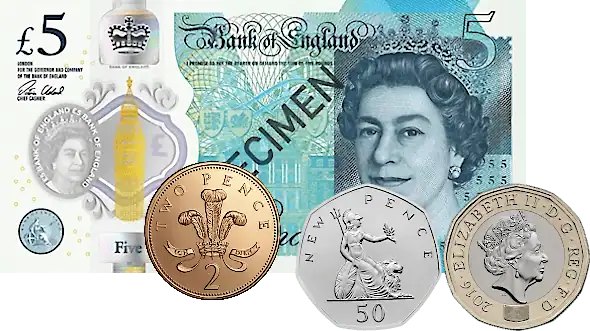
Paying with cash
- Benefits
- Good for one-off journeys if you don’t have a contactless card
- They’re easy for tourists to understand, because they’re probably very similar to their metro or subway tickets back home. You just go up to a self-service machine and buy a ticket for your destination
- Downsides
- Cash fares are the most expensive tickets for single journeys (double the cost of contactless and Oyster!)
- There are no off-peak tube fares
- Unlike Oyster cards and travelcards, you can’t buy them online in advance
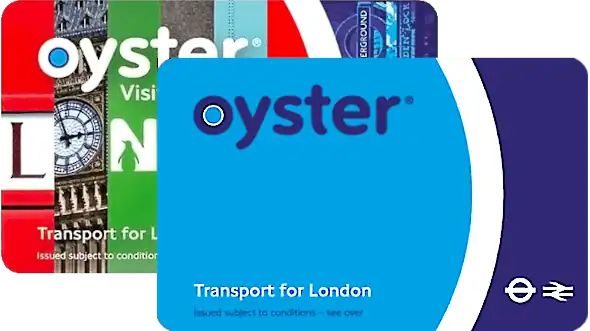
- Benefits
- Joint cheapest fares for single journeys
- Its daily cap is always cheaper than a one day travelcard
- Its weekly cap is the same price as a weekly travelcard, but unlike travelcards, its pay-as-you-go-credit can be used in all the zones
- It has an ‘auto top-up’ feature so you don’t have to keep adding credit
- Your unused credit never expires
- You can refund unused credit at the end of your holiday
- Downsides
- You can’t pay two fares with one Oyster card, so each person needs their own
- You have to pay a £7 deposit when you buy a new card
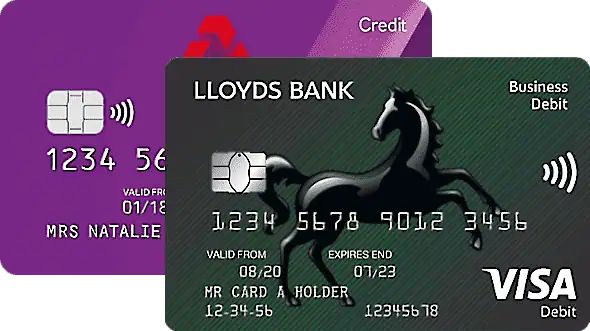
- Benefits
- It’s just your normal bank card, so you should already have one
- Joint cheapest fares for single journeys
- Its daily cap is always cheaper than a 1-day travelcard
- Unlike travelcards, they can be used in every zone
- Unlike Oyster, there’s no need to top it up
- Downsides
- You can’t pay two contactless fares with one card, so each person needs their own
- Unlike the dates on weekly travelcards, the weekly cap has to run from Monday to Sunday
- Foreign cards might have a transaction fee added every time you buy a ticket
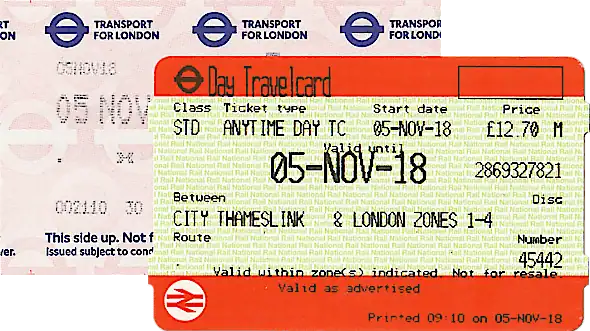
- Benefits
- You can make unlimited journeys between the dates
- A weekly travelcard might be cheaper than Oyster’s weekly cap
- Unlike Oyster, you don’t have to pay a £7 deposit
- You can take advantage of National Rail’s 2-for-1 offer
- Downsides
- You can’t share a travelcard between two people
- 1-day travelcards always cost more than the Oyster daily cap
- It’s either 1 day or 1 week, you can’t buy one for 2-6 days
- Unlike Oyster cards, you can only use them in the zones you buy them for
Can you buy a ticket onboard the train?
No. You have to buy a paper ticket, travelcard or Oyster card before you board the train. It’s not possible to buy one onboard.
How much is a return fare on the London Underground?
There are no return fares on the London Underground.
It is possible to select a return journey at a self-service ticket machine, but you’ll just be paying the same price as two single journeys and end up receiving two single tickets.
What is the daily and weekly price cap?
Daily price cap – Oyster tube fares and contactless tube fares have a daily price cap. This is the maximum daily charge that will be taken from your card each day – regardless of how many journeys you make. The computer keeps track of all the individual journeys you make throughout the day, totals them up, and as soon as the accumulated amount reaches the daily cap it will stop charging you.
The daily cap is always cheaper than buying a 1-day travelcard.
Note: You must remember to use the same card for every journey, otherwise the computer won’t recognise that they all came from you. Likewise, if you’re using contactless through your mobile phone or watch, then you must use the same device each time.
Weekly price cap – Oyster cards and contactless cards also have a weekly price cap. This works in exactly the same way as the daily cap, but will limit your seven day spend to the same price as a 7 day travelcard.
Important note: the weekly cap only works between Monday and Sunday, so if you’re travelling between any other stretch of seven days (like Friday to Thursday, for example) then the computer will charge you for seven individual days instead.
What time is Peak, Off-Peak and Anytime?
For Oyster and contactless – Oyster fares and contactless fares are described as being Peak and Off-peak.
Peak time is between 6.30-9.30 AM and 4-7 PM (Monday to Friday). Anything else is off-peak, including public holidays. Note: Between the 8th March and 31st May 2024 TFL are running a trial called ‘Off-Peak Friday Fares’, where Fridays will be classed as off-peak all day.
For travelcards – Travelcards are slightly different because they’re described as being Anytime and Off-peak.
Anytime means that you can travel at any time of day, and up to 4.30 AM the following morning. Off-peak is any time after 9.30 AM (Monday to Friday), and up to 4.30 AM the following morning. Weekends and public holidays are always off-peak.
Note: Underground fares are worked out according to what time your journey begins. It doesn’t matter what time your tube journey finishes. So an Oyster journey between 6 AM and 7 AM on a Monday is off-peak. Between 9 AM and 10 AM it’s peak. For a travelcard both journeys are anytime.
Do children get cheap train fares?
Yes. Children under the age of 11 can travel for free on the tube if they’re accompanied by an adult, or they have a 5-10 Zip Oyster photocard. Children aged between 11-17 do have to pay, but they can benefit from cheaper fares if they’re carrying the right photocard, or they have the ‘Young Visitor Discount’ applied to their London Oyster card.
See our child tube fares page for more details.
Do seniors get cheap train fares?
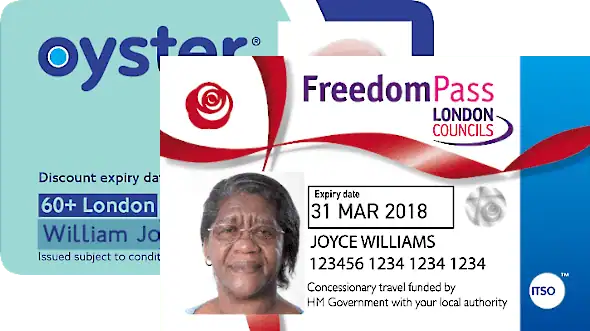
Senior citizens who live in a London borough are eligible for free or discounted travel on the London Underground. (Senior citizens who live outside London can use their OAP pass for free travel on London buses, but not the trains.)
Freedom Pass – If you’re old enough to receive a woman’s state pension (regardless of whether you’re a man or a woman), and your principal home is in London, then you can get hold of a Freedom Pass.
This entitles you to travel for free outside of the morning peak period (4.30 AM to 9 AM, Monday to Friday) on London buses, the London Underground, London Overground, TFL Rail and some National Rail trains within London.
Freedom Passes are supplied by your local council and you can apply online at londoncouncils.gov.uk.
60+ London Oyster photocard – If you’re aged 60 or more and you live in a London borough then you can apply for a 60+ Oyster Card. This allows you to travel for free outside of the morning peak period (4.30 AM to 9 AM, Monday to Friday) on the buses, London Underground, London Overground, TFL Rail and some National Rail services within London.
You can apply for a card online at tfl.gov.uk/fares/free-and-discounted-travel.
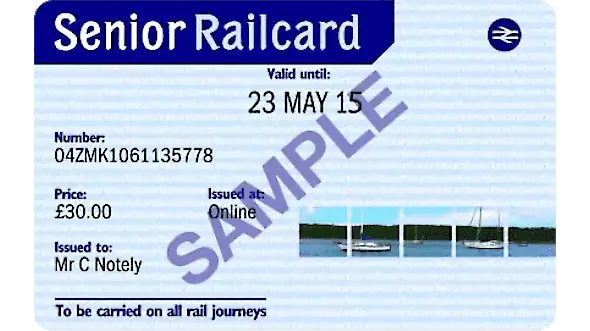
Senior Railcard – If you’re aged 60 or more and you’re travelling on the London Underground and a few National Rail trains then you might benefit from buying a Senior Railcard.
This entitles you to a ⅓-off train fares throughout Britain. You can also have the discount card loaded straight onto your Oyster card and get a ⅓-off pay-as-you-go fares and a ⅓-off the daily price cap (off-peak travel times only).
Make sure you read the terms and conditions carefully though, because it’s usually not valid during peak hours (the peak times will vary depending on which part of the country you’re travelling in) – but given how expensive train tickets are these days it might pay for itself after just three or four journeys.
What is the cheapest way to travel on the tube?
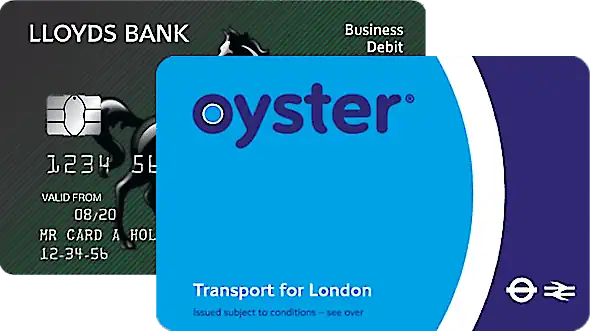
The cheapest way to travel on the tube is with contactless and Oyster – but contactless is usually the better option for UK visitors because you also have to pay a £7 deposit the first time you buy an Oyster card.
We don’t recommend contactless cards for foreign visitors because your bank might add on a transaction fee every time you use it overseas, which will bump up the price of your train ticket.
Try and avoid paying by cash on the London Underground as well, because that always has the highest charges.
What is a Two Together Railcard?
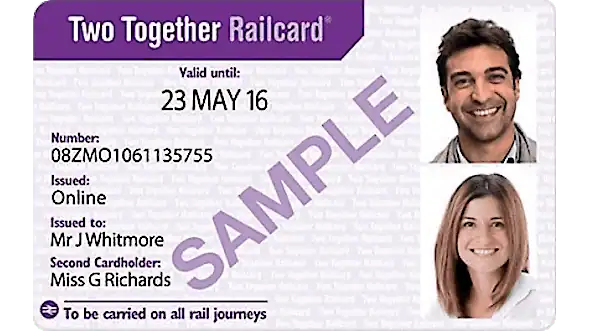
A Two Together Railcard offers discounted train tickets if you’re travelling with your partner to other parts of the UK. But it has to be the same person each time because it will have your names and photos printed on the front (or inside the app, if you’re using contactless). If you want to make a journey on your own during that period then you’ll have to pay normal price.
Another downside when compared to other Railcards is that you can’t use it to get a discount on Oyster pay-as-you-go fares, or Oyster daily caps – but you can use it to get a discount on day travelcards when bought together with a ticket for a National Rail train coming into London.
Check out their website at railcard.co.uk.
What is a Family & Friends Railcard?
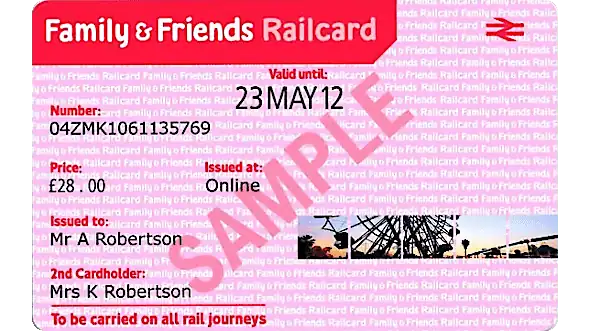
A Family & Friends Railcard offers cheap train tickets if your group size is up to 4 adults and up to 4 kids, but if the majority of your holiday is inside London then beware… because the only useful discount you’ll get is ⅓-off 1 day travelcards when bought together with a National Rail train ticket coming into London (subject to a minimum fare). And it doesn’t apply at peak-time either.
Check out their website at railcard.co.uk if you’re interested.
What is a Disabled Persons Railcard?
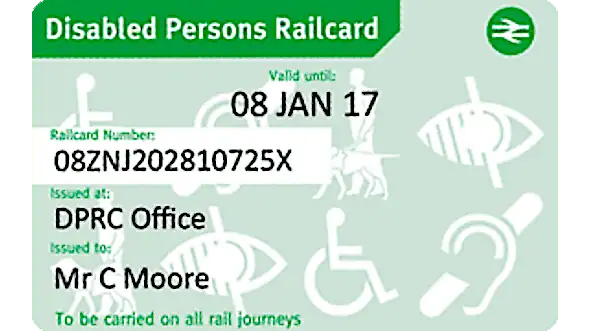
A Disabled Persons Railcard offers cheap train tickets if you have a disability that meets their eligibility criteria.
After you’ve linked the pass to your Oyster card you’ll get a ⅓-off pay-as-you-go fares and daily price caps. You can also get a travelling companion some money off the cost of a day travelcard if it’s bought in conjunction with a National Rail ticket coming into London.
Find out more at railcard.co.uk.
How do you calculate a London Underground fare?
In order to work out your London Underground fare you will need to know every fare zone that your journey passes through (not just the ones you start and finish at). You can use our train journey planner to do this.
For example, if you look at the tube ticket prices on our Heathrow to King’s Cross page then you’ll see that the journey passes through zones 1 to 6.
Just to make things a little bit more confusing, some of London’s underground stations are in two different zones at once. Earl’s Court station, for example, is in zones 1 and 2. The charge for these stations is based on your direction of travel. If your journey begins at Earl’s Court and heads towards zone 1 then Earl’s Court will count as zone 1. If you’re heading towards zone 2 then it will count as zone 2. And if your journey finishes at Earl’s Court then it will count as zone 1 if you came from zone 1. And it will count as zone 2 if you came from zone 2.
Do you have to pay twice if you change trains?
If you change trains during your journey then you only have to pay one fare – assuming you don’t exit any of the stations in-between.
For example, if you’re travelling between Waterloo and South Kensington then you’ll have to change trains at Westminster, but you’ll be able to walk between the platforms without passing through any ticket barriers. If you did pass through a barrier then that would be the end of your journey.
How do you use Oyster and contactless cards on the tube?
Using contactless cards and Oyster cards on the London Underground is easy. All you have to do is wave them in front of the big yellow reader by the gate. If the machine registers it correctly then the ticket barrier will open automatically for you to walk through.
If it doesn’t work then try taking your card out of your purse or wallet and touching it flush against the reader. If it still doesn’t work then look at the little LCD screen by the reader to see what it says (you’re probably out of credit).
If you’re travelling from a suburban station outside central London then you might find that it doesn’t have any gates, and the readers will either be at the foot of the platform stairs or on the platform itself.
When you leave the train at the end of your journey you will need to tap your card down again, so the computer can work out which fare zones you travelled through. You need to do this even if there’s no barrier, or when the barrier has been deliberately left open by the TFL staff (which they sometimes do to speed the flow of passengers during rush hour). If you forget to touch your card down then the system will whack you for a maximum fare (ouch!).
How do you use single tickets and travelcards on the London Underground?
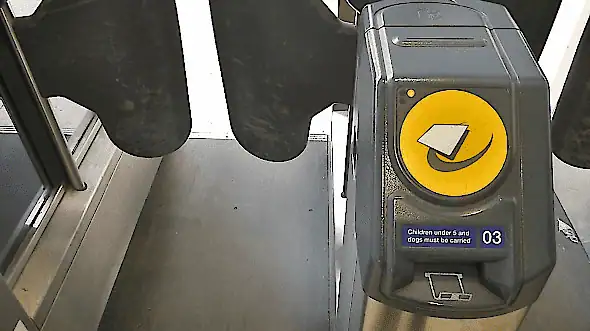
Using paper tickets on the London Underground is easy. Just insert your single ticket or paper travelcard face-up into the slot at the front of the ticket barrier (underneath that big yellow Oyster reader). The same ticket will then pop out of the slot on the top. The gate won’t open until you remove your ticket from this slot (something that catches a lot of people out).
If your travelcard has been loaded onto a London Oyster card then it’s a little bit easier, because all you have to do is wave it in front of the yellow reader and the gate will open automatically.
Which is best: cash, contactless, Oyster card or travelcard?

Cash fares on the London Underground are considerably more expensive so they should be avoided unless it’s just a one-off journey.
Day travelcards are surprisingly expensive when compared to the contactless and Oyster daily cap, but lots of tourists like the simplicity of being able to buy a travelcard straight from a self-service machine. (You also have to pay a £7 deposit the first time you buy an Oyster card, which will wipe out any savings you make if you’re only staying in the city for one day.)
Contactless and Oyster have the joint cheapest fares on the tube, but contactless is more convenient for UK visitors because of that £7 deposit. We don’t recommend contactless for foreign visitors because your bank might add on a transaction fee every time you buy a train ticket overseas.
Note: If you’re staying in London for a week and you’re planning on making three or more tube journeys on six days, or two or more on seven days, then a weekly travelcard might work out cheaper – but only if you’re not staying from Monday to Sunday. (That’s because the weekly cap on Oyster and contactless only applies from Monday to Sunday, whereas a travelcard can start on any day you like.)
The verdict: Contactless is always the best option for UK visitors. A 1-day travelcard is the best option for foreign tourists staying for just one day. Oyster is the best option for foreign tourists staying for more than one day, and a weekly travelcard might be the cheapest option if you’re staying for 6-7 days, depending on how many journeys you make.